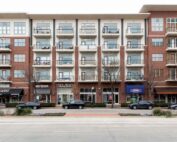by CNU Staff
OCT. 10, 2014
The many uses of the term “placemaking” are confusing and contradictory. This undermines the term’s ability to help neighborhoods and communities imagine and create a better future.
The simplest definition is as follows: “Placemaking is the process of creating quality places that people want to live, work, play, and learn in.”
Placemaking is a process. It is a means to an end: the creation of Quality Places.
What exactly is a Quality Place? I would characterize it as a building, location, or space that possesses a strong sense of place. It is a structure or space where people, businesses, and institutions want to be. Such places often are alluring; they have pizzazz.
Places of this sort have been around for centuries, responding to innate human needs and desires. But as technology advances and other aspects of life evolve, new facets are sometimes added. The key elements of Quality Places today, I would argue, are these:
- A mix of uses
• Effective public spaces
• Broadband capability
• Multiple transportation options
• Multiple housing options
• Preservation of historic structures
• Respect community heritage
• Arts, culture, and creativity
• Recreation
• Green space
• Quiet, unless they are designed to be otherwise.
Quality Places are active and unique sites—interesting, visually attractive, and often incorporating public art and creative activities. They have pleasing façades and good building dimensions relative to the street, and are people-friendly.
Quality Places embody good form, which includes:
- Mass, density, and scale that are appropriate to their location on the rural-urban Transect
• Human scale
• Walkable and bikable streets and trails.
These form characteristics result in Quality Places that are:
• Safe
• Connected
• Welcoming
• Conducive to authentic experiences
• Accessible; people can easily circulate within and to and from these locations
• Comfortable; they address cleanliness, character, and charm
• Sociable; they have a physical fabric that encourages people to connect with one another
• Able to promote and facilitate civic engagement.
Inherent in the above description is a simple formula: Proper physical form plus a mix of uses and functions plus a mix of social opportunity leads to positive activities and a strong sense of place.
A place analogy we use that resonates with many people is:
- Form creates the Stage
• Activity is the Play
• Response is how you Feel about the Play
• The Economic outcome is good if the Play makes Money (allowing nearby businesses to prosper)
• Sense of Place is strong if the above are true.
Types of Placemaking
Placemaking comes in more than one variety.
In most instances, placemaking — what I would call “standard placemaking” — is an incremental method of improving a location over a long period of time through many separate small projects or activities. The Project for Public Spaces (PPS) has long been an advocate of this approach.
However, placemaking can also be called upon to create and implement larger-scale transformative projects and activities—converting a location in a short period of time into one that exudes a strong sense of place and serves as a magnet for people and new development. Complete streets, form-based coding, and New Urbanism foster this kind of placemaking.
There are three varieties of specialized placemaking:
- Strategic Placemaking (as advocated by Michigan’s MIplace Partnership Initiative).
• Creative Placemaking (as advocated by the National Endowment of the Arts, the US Conference of Mayors, and the American Architectural Foundation).
• Tactical Placemaking (as advocated by Street Plans Collaborative and PPS).
The three specialized types of placemaking focus on:
- Specific quality of life improvements
• Achieving outcomes at specific scales and time periods, or
• Ways to try some things out [test strategies] before committing significant money and other resources.
All forms of placemaking depend on broad engagement of stakeholders to design projects and activities. This requires engaging and empowering people to participate in the process. The types of projects include downtown street and façade improvements, neighborhood-based projects such as residential rehabilitation, residential infill, and mixed-use projects, and improvements to parks and public spaces.
Strategic placemaking is targeted to a particular goal in addition to creation of Quality Places. It may aim to develop places that are uniquely attractive to talented workers, that attract businesses, and that catalyze substantial job creation and income growth. This adaptation of placemaking especially targets knowledge workers who, because of their skills, can choose to live anywhere and who tend to pick Quality Places offering certain amenities.
Strategic Placemaking is pursued collaboratively by public, nonprofit and private sectors over a period of 5 to 15 years, often in downtowns and at nodes along key corridors. The term was coined by the Land Policy Institute at Michigan State University based on research into why communities are gaining or losing population, jobs, and income.
Creative Placemaking was coined by Ann Markusen and Anne Gadwa in a 2010 report by that name for the National Endowment for the Arts. Creative Placemaking focuses on museums and orchestra halls and housing for artists and new cultural activities such as public art displays, outdoor concerts, movies in the park, and installations such as transit stations with art themes. Markusen and Gadwa wrote:
“In creative placemaking, partners from public, private, non-profit, and community sectors strategically shape the physical and social character of a neighborhood, town, city, or region around arts and cultural activities. Creative placemaking animates public and private spaces, rejuvenates structures and streetscapes, improves local business viability and public safety, and brings diverse people together to celebrate, inspire, and be inspired.”
Tactical placemaking brings together “Tactical Urbanism,” (described in books by the Street Plans Collaborative) and the PPS’s “Lighter, Quicker, Cheaper” approach, which uses a term coined by Eric Reynolds of Urban Space Management.
Tactical Urbanism is described as “Incremental, small-scale improvements” employed to “stage more substantial investments.” This approach allows a host of local actors to test new concepts before making substantial political and financial commitments. Sometimes sanctioned, sometimes not, the actions are commonly referred to as “guerrilla urbanism,” “pop-up urbanism,” “city repair,” or “D.I.Y urbanism.”
Lighter, Quicker, Cheaper is described by PPS as a process to activate public spaces in a way that is “lower risk and lower cost, capitalizing on the creative energy of the community to efficiently generate new uses and revenue for places in transition. … We often start with Amenities and Public Art, followed by Event and Intervention Projects, which lead to Light Development strategies for long-term change.” This approach favors “use over design and comprehensive construction,” to “strike a balance between providing comfortable spaces for people to enjoy while generating the revenue necessary for maintenance and management.”
Tactical placemaking is a phased approach that can start quickly, often at low cost. It targets public spaces and can be implemented continuously in neighborhoods with a mix of stakeholders. Projects may include a temporary road diet using paint, the pilot construction of a new form of dwelling in a neighborhood, or temporary conversion of a storage facility into a business. Activities include parking space conversions, self-guided historic walks, and outdoor music events in town squares.
What type of placemaking to use
In an era of limited funds and resources, selecting the best placemaking approach for the community and situation is critical. The Table on page 7 offers problems, solutions, and payoffs for these approaches. Over time, a community may need to use all of the differing approaches. They can be implemented in combination or separately, simultaneously or sequentially, depending on particular objectives and opportunities.
Mark A. Wyckoff, FAICP, is a professor at the Michigan State University Land Policy Institute. This article is a shorter, edited version of one that was written to support Michigan’s placemaking curriculum created as part of the public/private MIplace Partnership Initiative (miplace.org). A book on these types of placemaking with a focus on the use of placemaking for economic development purposes will be available in the first quarter of 2015.
Note: This article appeared in the September-October 2014 print issue of Better Cities & Towns



